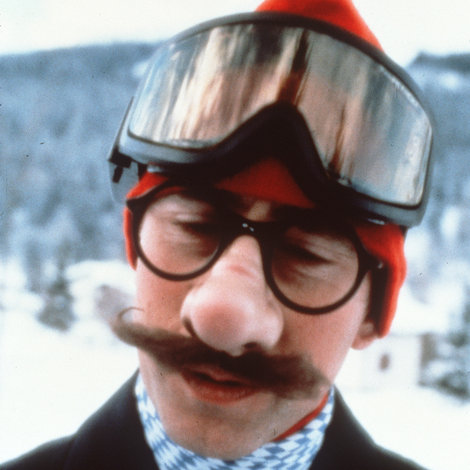In 1925, the International Exhibition of Modern Decorative and Industrial Arts turned Paris into a fashion wonderland nonpareil. Exhibiting in the Grand Palais and the ephemeral Pavillon de l’Élégance as well as in pop-up boutiques and on catwalks, the city’s couturiers saw their craft elevated from mere dressmaking to an art form on an international scale. Although they didn’t paint or sculpt, they draped and cut, embellishing canvases of velvet and silk with beading and embroidery.
Never one for small gestures, Paul Poiret—known as Le Magnifique—wasn’t content to be featured alongside the rest of the fashion pantheon. Instead, in a flourish demonstrating his clairvoyant grasp of what would come to be the “lifestyle brand,” Poiret installed three barges on the Seine. “Amours” featured his interior-décor and perfume lines, the dance hall “Orgues” displayed his textile collaborations with the young Raoul Dufy, and the designer himself played host at the luxury restaurant “Délices”—his own floating world.

Marking the centenary of the 1925 Expo, the exhibition “Paul Poiret. Fashion Is a Feast”—opening next Wednesday at the Musée des Arts Décoratifs, Paris—immerses visitors in that world.
With more than 500 works from the M.A.D. collection, including garments, textiles, furniture, sketches, photographs, and posters, the curator Marie-Sophie Carron de la Carrière re-creates Poiret’s universe, from the Belle Époque to the Années Folles.
“I am an artist,” Poiret proclaimed, “not a dressmaker.” The M.A.D. exhibition presents His Magnificence in the round, capturing the totality of this multifaceted man, who was also a collector, painter, actor, writer, musician, and gourmet. Thematic and chronological, it begins with his time at Doucet and Worth, then moves to the launch of the Maison Paul Poiret, in 1903. There he would realize his own aesthetic code, characterized by simplified lines and liberating, corset-less designs as well as sumptuous Orientalist fantasies.

“Fashion Is a Feast” serves up the spectacular. Poiret was a faithful attendee of Diaghilev’s Ballets Russes; dressed performers such as Sarah Bernhardt, Réjane, Nyota Inyoka, and Isadora Duncan; and acted as costume director of his own extravagant parties. The show also includes intimate family photographs of his wife and muse, Denise; their children; and his sister, Nicole Groult.

Poiret’s world travels, recounted in his memoirs and reflected in his designs, are matched by world-building that anticipated fashion’s potential as a business empire offering a coherent design for living. Through his interiors company, Martine, and his perfume company, Rosine, the couturier developed his vision of a woman coordinated with absolutely everything around her: wallpaper, carpets, lighting, glassware, ceramics, and the very air she breathed. One didn’t simply wear Poiret but lived à la Poiret.
Alongside Directoire-inspired dresses embellished with pearls and spectacular fur-trimmed opera coats, the exhibition is punctuated by the many creators in Poiret’s orbit. He kept his finger on the pulse of the avant-garde, and as the first designer to work extensively with visual artists on textiles, décor, and illustration, he pioneered the fashion “collab.” Paul Iribe, George Barbier, Georges Lepape, Raoul Dufy, Erté—these artists endure as icons of the era, a testament to the designer’s eye and lasting influence.

Indeed, couturiers throughout the 20th and 21st centuries—Christian Dior and Elsa Schiaparelli, John Galliano and Christian Lacroix, and, just last year, Alphonse Maitrepierre—have cited his silhouettes and scale as they soared to the heights of multi-hyphenate directorships. Paul Poiret and his unlimited appetite for greatness transformed the very identity of the fashion designer.
“Paul Poiret. Fashion Is a Feast” will be on at the Musée des Arts Décoratifs, in Paris, from June 25, 2025, to January 11, 2026
A Paris-based enthusiast of fashion studies and art, Lacey Minot has written about the history of pajamas, ghosts in white dresses, and Foujita’s sense of style. Her work appears in a variety of international publications

